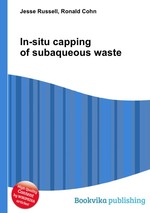In-situ capping of subaqueous waste
Jesse Russell Ronald Cohn
бумажная книга
High Quality Content by WIKIPEDIA articles! In-Situ Capping (ISC) of Subaqueous Waste is a non-removal remediation technique for contaminated sediment that involves leaving the waste in place and isolating it from the environment by placing a layer of soil and/or material over the contaminated waste as to prevent further spread of the contaminant. In-situ capping provides a viable way to remediate an area that is contaminated. It is an option when pump and treat becomes too expensive and the area surrounding the site is a low energy system. The design of the cap and the characterization of the surrounding areas are of equal importance and drive the feasibility of the entire project. Numerous successful cases exist and more will exist in the future as the technology expands and grows more popular. In-situ capping uses techniques developed in chemistry, biology, geotechnical engineering, environmental engineering, and environmental geotechnical engineering.


